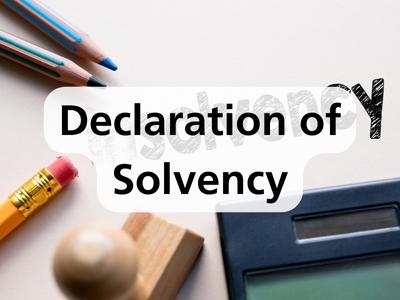Understanding the Declaration of Solvency
 The Declaration of Solvency is a formal statement made by a company’s directors, affirming that the company is financially sound and capable of meeting its obligations as they fall due. This declaration is an integral part of certain corporate actions in Malaysia, ensuring legal compliance and transparency in financial dealings.
The Declaration of Solvency is a formal statement made by a company’s directors, affirming that the company is financially sound and capable of meeting its obligations as they fall due. This declaration is an integral part of certain corporate actions in Malaysia, ensuring legal compliance and transparency in financial dealings.
Purpose and Usage
In Malaysia, the Declaration of Solvency is often required in cases such as:
Voluntary Liquidation
When a company opts for a members’ voluntary winding-up, this declaration assures creditors that the company can settle its debts within 12 months of starting the winding-up process.
Corporate Restructuring
It is also used in mergers, demergers, and other restructuring activities to provide stakeholders with confidence in the company’s financial stability.
By making this declaration, directors assume legal responsibility for the company’s financial health, promoting trust and accountability.
Content and Legal Requirements
The Declaration of Solvency in Malaysia must include the following details:
- The company’s financial position, including assets and liabilities.
- An assessment of the company’s ability to pay its debts within a specified period (typically 12 months).
- A statement confirming that the directors have conducted a thorough evaluation of the company’s financial status.
This declaration is prepared under the requirements of the Companies Act 2016 and must be made in good faith.
Signing and Filing
The Declaration of Solvency must be signed by the majority of the company’s directors. It is then filed with the Companies Commission of Malaysia (SSM) as part of the legal process for voluntary winding-up or other corporate actions.
Directors must ensure the accuracy of the declaration, as submitting false or misleading information can result in severe legal consequences, including personal liability for the directors involved.

